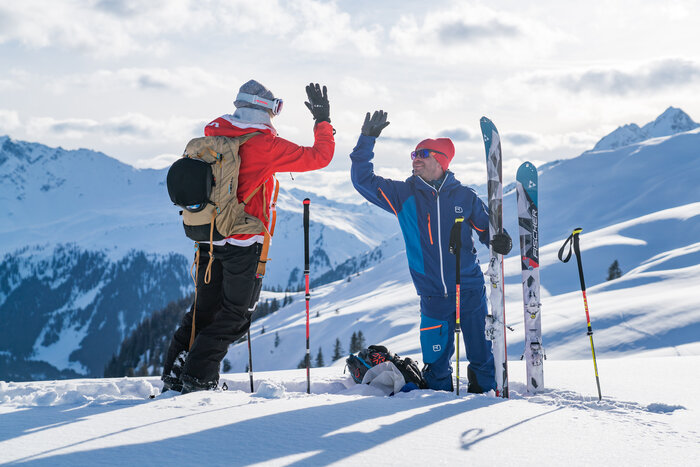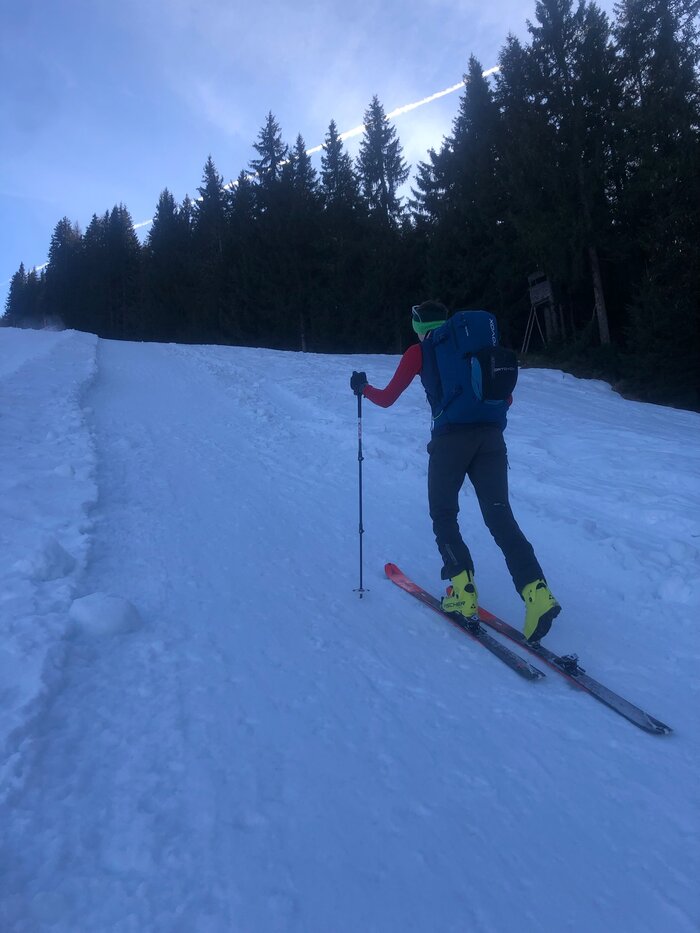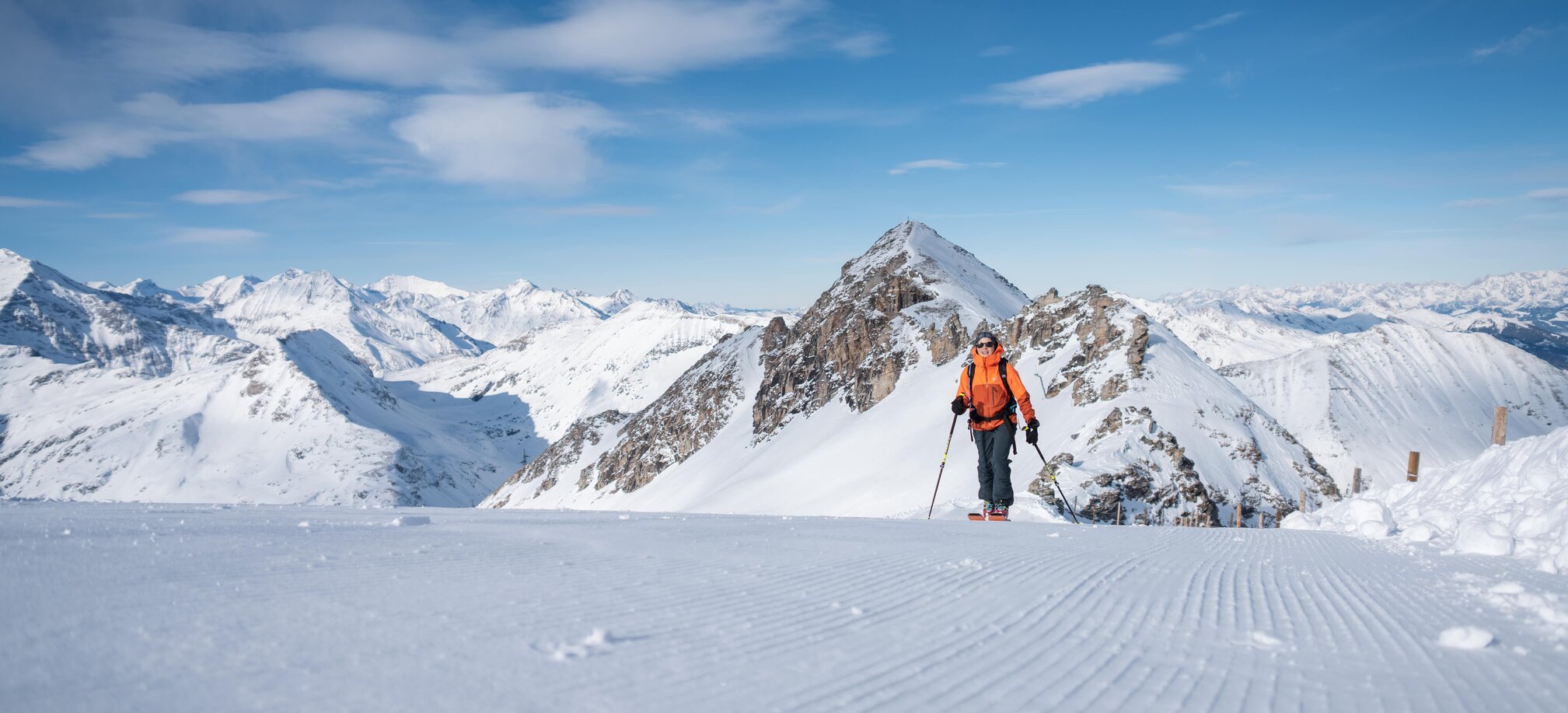
In order for you to be able to go up the mountain at all, the flexible binding is then added (I use the "Zapferl binding" because it is lighter) and the ski touring skins underneath your skis. It is best to buy all of this in a set from your trusted sports retailer. Ski touring boots are lighter and more flexible than alpine ski boots. If you want to save on the purchase, save on the skis or the bindings and rather take a few grams more with you than buying ski touring boots that are cheaper but don't fit perfectly - because that's the most important part of the gear and needs to fit perfectly. Height adjustability is important for the sticks, as is wide plates.
Tip: Without the plates, the ski touring poles can be used perfectly as hiking poles in summer.
When it comes to clothing, the most important thing is what I think women are better in it than men (unfortunately I have to admit honestly): layering – the onion look. You start with ski touring socks, I use the same ones I use for skiing. They reach just below the knees and must fit very tight, because folds end in painful blisters. If the temperatures are reasonably warm, i.e. anything warmer than -5 degrees, you can do without ski underwear, depending on your personal cold sensitivity. Ski touring pants next and then a long-sleeved sports shirt with a short stand-up collar. On top of that, a thin jacket with wind stopper and a thick jacket for the descent after conquering the summit. You can buy all the clothes from the usual ski tour suppliers: Montura, Ortovox, Martini, whatever you want. They are also all very similar in price and again I use many items of clothing all year round.
As for the accessories: a loop scarf for warmth around the neck, thin gloves for the ascent and thick ones for the descent, helmet and ski goggles are a must and not difficult to wear either. They can usually be easily attached to the outside of the backpack.

Speaking of backpacks: It’s best to pack what you need last at the bottom. It is best to start in the largest compartment with the thick gloves, the thick jacket, the bag for the skins and end with a second warm shirt to change into at the summit. You can pack snacks such as energy bars, fruit or other items into smaller compartments. Drinks – at least 1.5 liters for small tours, more for larger ones – go on the outside of the backpack. If you don't have an ideal holder here, just put it in the big compartment. The best is warm tea or warm water for the ascent to counteract the cold temperatures and to warm your body.
If you intend to go off-piste, or whenever you are not on secured routes on the slopes, be sure to take your avalanche equipment with you. You don't need any equipment on the piste tour routes in Ski amadé as long as you don't leave the secured paths. But in all other cases, be sure to take it with you and attend an avalanche course beforehand. Because without training, courses and experience, which you only get in the long term if you spend a lot of time out and about with experienced ski tourers, all the equipment is of little help to you.
The avalanche set always has its own place in the backpack where nothing else is inside and you can access it quickly. The beeper is always as close as possible to the body and not on the backpack because you could lose it. Always switch on and test before you start. Shovel and probe in your backpack and make sure to buy one made of aluminum and not plastic for the shovel - plastic breaks too quickly when it matters most. As I said, you will learn the rest in a corresponding, professional course.
If you consider all of this, plan your tour carefully in advance, observe the weather and always travel with at least one other person, then nothing stands in the way of your ski touring adventure on the slopes of Ski amadé. And don't forget your piste tour ski ticket so you don't get into trouble with the piste police.
Stay safe and have fun!
